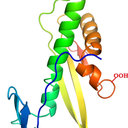The molecular basis of cytotoxicity of α-spinasterol from Ganoderma Resinaceum: induction of apoptosis and overexpression of p53 in breast and ovarian cancer cell lines.
Cuvinte cheie
Abstract
Despite advances in therapy of breast and ovarian cancers, they still remain among the most imperative causes of cancer death in women. The first can be considered one of the most widespread diseases among females, while the latter is more lethal and needs prompt treatment. Thus, the research field can still benefit from discovery of new compounds that can be of potential use in management of these grave illnesses. We hereby aimed to assess the antitumor activity of the phytosterol α-spinasterol isolated from Ganoderma resinaceum mushroom on human breast cancer cell lines (MCF-7, MDA-MB-231), as well as, on human ovarian cancer cell line (SKOV-3). The anti-tumor activity of α-spinasterol, isolated from the mycelial extract of the Egyptian G. resinaceum, on human breast and ovarian cancer cell lines was evaluated by MTT cell viability assay and AnnexinV/propidium iodide apoptosis assay. The molecular mechanism underlying this effect was assessed by the relative expression of the following markers; tumor suppressor (p53, BRCA1, BRCA2), apoptotic marker (Bax) and cell cycle progression markers (cyclin dependent kinases cdk4/6) using real-time PCR. Cell cycle analysis was performed for the three investigated cancer cell lines to explore the effect on cell cycle progression. Our findings showed that α-spinasterol exhibited a higher antitumor activity on MCF-7 cells relative to SKOV-3 cells, while its lowest antitumor activity was against MDA-MB-231 cells. A significant increase in the expression of p53 and Bax was observed in cells treated with α-spinasterol, while cdk4/6 were significantly down-regulated upon exposure to α-spinasterol. Cell cycle analysis of α-spinasterol treated cells showed a G0 -G1 arrest. In conclusion, α-spinasterol isolated from G. resinaceum mushroom exerts a potent inhibitory activity on breast and ovarian cancer cell lines in a time- and dose-dependent manner. This can be reasonified in lights of the compound's ability to increase p53 and Bax expressions, and to lower the expression of cdk4/6.


